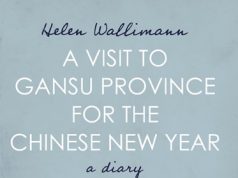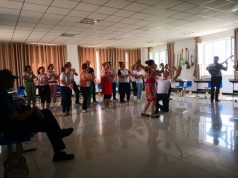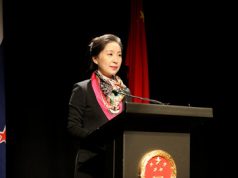China’s Hukou (Houshold Registration, or also known as Internal Passport) system is one
of the most pressing areas for policy reform.
The hukou system designates a resident’s status as being either rural or urban based on
their registered birthplace. In practice, this means a migrant worker from the countryside is not entitled to public services in a city where they are not from, despite working and
living in the city. Chinese migrants need to register with the local public security office
when moving around China and can face discrimination in labour markets, are cut off from
home loans and face challenges in getting a good education for the children.
There are an estimated 227 million migrant workers in China, many of these workers undertake jobs which local residents are unwilling to do.
The Hukou system is both a direct cause of economic and social inequality and a major
obstacle to China’s goal of building a highly urbanized, consumer-driven economy. In
2016 Premier Li Keqian announced the government’s ambitious plan of expanding urban
hukou or residency permits to 100 million migrant workers by 2020 as part of its plan to
rebalance its economy.
While the Hukou reforms will be a welcome change to millions of people there are a
number of challenges which need to be overcome. According to the Ministry of Public
Security’s own numbers they had issued 28.9 million new urban residency permits in
2016, with 1.69 million issued in Beijing, 406,000 in Shanghai, 810,000 in Guangzhou, and 1.71 million in Shenzhen.
No Chinese local governments want to be flooded by new residents as the know it will
place significant strain on their infrastructure and services. Because of this many tier 1 and tier 2 cities, such as Beijing, Shanghai, Guangzhou, and Shenzhen, as well as Chengdu, Wuhan, and Xi’an have developed a points system for grading out the less desirable migrants. Under the points system, employment, accommodation, educational
background, skill level, tax payments, and credit records, among other things, are
converted into points. Only those applicants who reach the points threshold will be
provided with the local urban Hukou.
Lower-tier cities, which are less developed and have smaller populations, have introduced
comparatively easier regulations, in line with the central government’s goal of channeling
migrants to these areas and providing extra labour to boost economic growth. Cities with a downtown population of less than 3 million permanent residents are disqualified for using a points system.
But despite the government’s attempt to attract migrant workers to lower-tier cities and
drive economic re-balancing toward its less developed regions, migrants moving to these
areas face huge challenges, such as: relocation costs, especially the cost of buying a
house or apartment in an urban centre; getting a job, while not having any established
guanxi networks; and moving away from friends and family as well as their support
networks. There is also unique benefits that are tied to rural hukou—including farming and housing land, compensation for land requisition, and more relaxed birth control policies. All of these are considered increasingly valuable.
Meanwhile, the competitive advantage of urban hukou has declined as China seeks to
expand basic public services into rural areas and as the market’s role in distributing food,
housing, and other needs increases. Disruptive and the online economy have also meany
many rural dwellers can work remotely or run their own businesses from their home town.
Many rural migrants feel that if they are unable to get a hukou for one of Chinese mega-
cities like Beijing or Shanghai, with its comparatively high incomes and standards of living
there is no reason to change to an urban one.
Because of this many migrants are opting to straddle and circulate between the city and
countryside rather than giving up their rural hukou.
From the city government’s perspective there is also significant challenges, these mostly
centre around the financing of infrastructure and the public services required to handle an
increased population. The central government has made huge investments, but China
still faces large shortages of doctors and other medical staff to meet surging demand. It’s a similar situation in the education sector, where standards, particularly in developing areas of the country, remain low.
The Chinese Academy of Social Sciences estimates that it costs RMB 100,000 to provide
public services like education and healthcare to each new migrant eligible for urban hukou
residency, which means RMB 100 billion for every additional 1 million migrants given
urban status. The government intends to switch over 100 million rural hukou holders by
2020 meaning an estimated bill of 10 trillion RMB. When you add that to the existing RMB
17 trillion, worth of debt already already held by local governments (as of the end of 2016) it looks unlikely they can afford to adequately service a rapid inflow of new residents.
In conclusion the major challenges are two fold, firstly many rural hukou holders are
coming to realise the real value of their residency, many are unwilling to change their hukou unless it is to one of the first tier cities. Secondly, while the central government
wants these rural migrants to move to second and third tier cities these local governments are going to struggle to finance them. In the long term it is likely that the central government will need to write off the debts carried by the local governments, however this will also hurt the Chinese economy in the short to medium term. Needless to say, reform of the hukou system does need to occur and the current pathway looks like it will work, even if there will be some pain a long the way.




